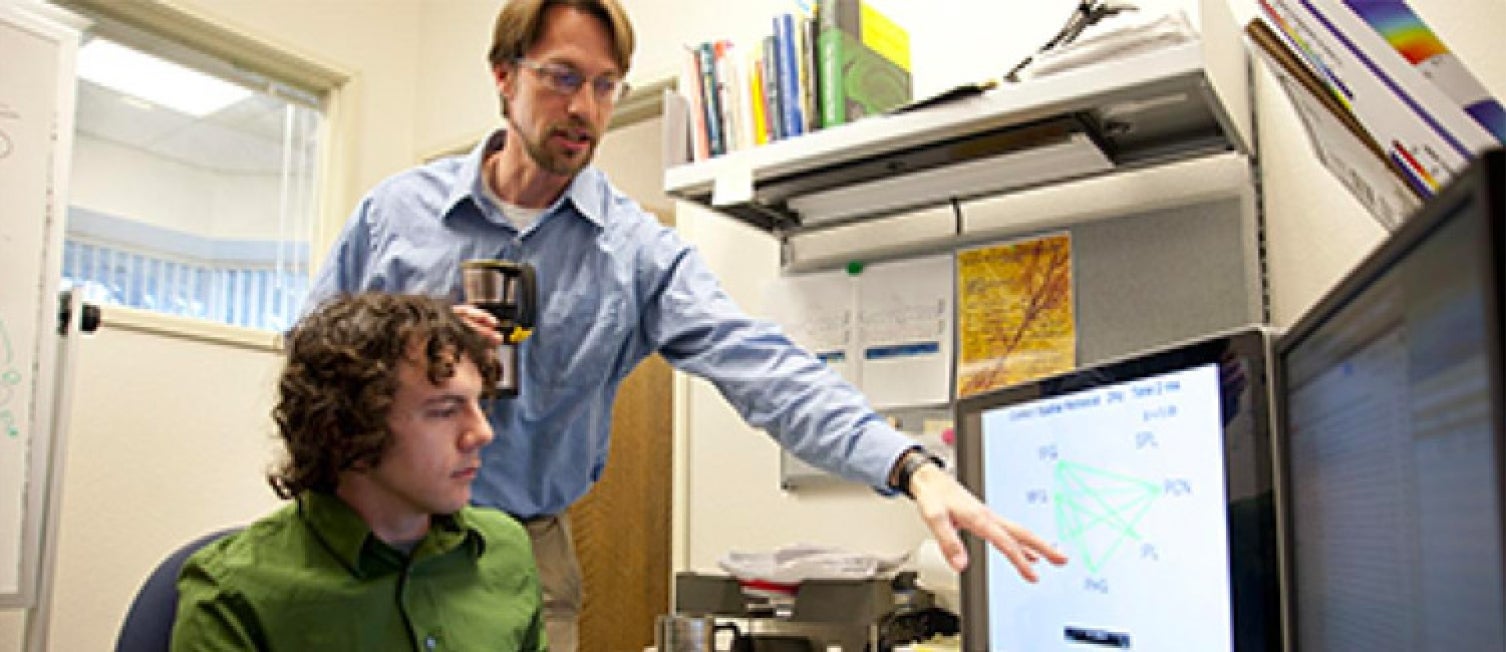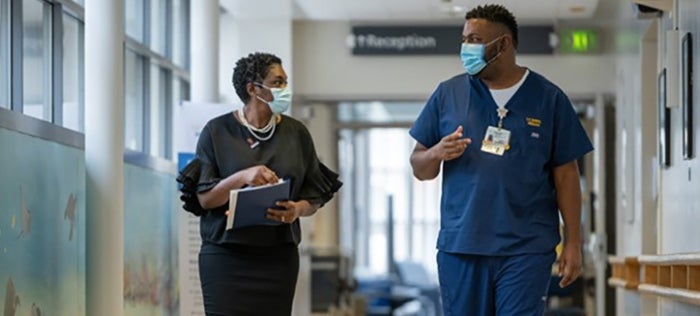
Boundless by philanthropy
We all have stories about when we’ve gotten lost: on the way to an interview, on a long hike, or driving in a new town. When one is lost, anxiety and fear often ensue, especially for people with diseases like Alzheimers, which could cause them to get lost more often. It can create a feeling as if one is being teleported to a vastly different place and time.
This is the space in which UC Davis Associate Professor Arne Ekstrom does his research. Ekstrom studies the way we think when we navigate, and his research—which is covering new ground thanks in part to the Chancellor’s Fellows Award and cutting-edge technology—uses virtual reality to simulate even the most disorienting scenarios, helping to further our understanding of certain health issues.
“The reason why we are interested in navigation and memory is that there are many conditions like Alzheimer’s disease, strokes, epilepsy, dementia, and even healthy aging that can affect both memory and our ability to navigate,” Ekstrom said. “So we think these are important cognitive functions to try to understand because being disoriented is panic inducing and in some cases can result in death. Teleportation is helpful to study because it can induce disorientation, even in healthy subjects, perhaps mimicking what it is like for people with diseases like Alzheimer’s when they get lost.”
Virtual reality is central to Ekstrom’s research. He explains that in the real world researchers can’t control who has already seen the environment and, therefore, can’t easily manipulate it to create disorientation. So his research uses technology supported by philanthropy to accomplish this goal.
Previous studies in virtual reality have been limited to the use of joysticks—an inadequate depiction of how humans navigate and process memory.
But now, with the $25,000 award provided by the Chancellor’s Fellows program, Ekstrom has purchased a state-of-the-art treadmill, which helps push his research to the next level. With this treadmill, subjects can turn 360 degrees, run, walk, and go both forwards and backwards, all the while being engrossed in a virtual environment.
“The reason why this treadmill is important is we can look at people freely walking, freely running, freely moving, while they wear goggles that display complex virtual environments,” said Ekstrom. “This allows us to completely configure the environment the way we might want, creating better experiments and, at the same time, test all sorts of interesting things about the importance of body-based functions to navigation: the feeling of your feet when you walk, what happens when you turn, etc.”
There are only a few of these treadmills in the world. Ekstrom attained it through collaboration with Research Computer Scientist Oliver Kreylos from the department of earth and planetary sciences.
“Here at UC Davis, people are really collaborative and helpful,” Ekstrom said. “So Oliver introduced us to this company called Virtualizer that had this treadmill, so we have him to thank for this early prototype.”
In addition to faculty collaborators, Ekstrom says student researchers are the core of what makes the lab successful. He works with five undergraduates and five graduate students, with two more joining him this summer.
“Risk and innovation do not happen without financial support and seed money, and the mechanisms that we have for funding from the government typically do not award these types of studies,” he said. “So without generous donations, such as those that fund the Chancellor’s Fellows award, we simply would not have the funds to do high risk but high payout studies such as our treadmill, and it’s very possible that it never would have gone anywhere without philanthropy.”


